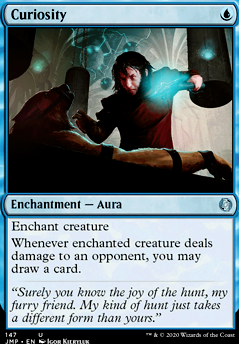Land (30)
- 1x Badlands
- 1x Bayou
- 1x Bloodstained Mire
-
1x
Breeding Pool

- 1x City of Brass
- 1x Command Tower
- 1x Exotic Orchard
- 1x Fiery Islet
- 1x Flooded Strand
- 1x Forbidden Orchard
- 1x Mana Confluence
- 1x Marsh Flats
- 1x Misty Rainforest
- 1x Morphic Pool
-
1x
Overgrown Tomb

- 1x Polluted Delta
- 1x River of Tears
- 1x Scalding Tarn
-
1x
Steam Vents

- 1x Taiga
- 1x Tarnished Citadel
- 1x Tropical Island
- 1x Underground River
- 1x Underground Sea
- 1x Verdant Catacombs
- 1x Volcanic Island
- 1x Waterlogged Grove
-
1x
Watery Grave

- 1x Windswept Heath
- 1x Wooded Foothills
Enchantment (10)
Instant (28)
- 1x Abrupt Decay
- 1x Assassin's Trophy
- 1x Brainstorm
- 1x Counterspell
- 1x Cyclonic Rift
- 1x Deadly Rollick
- 1x Deflecting Swat
- 1x Demonic Consultation
- 1x Dispel
- 1x Drown in the Loch
- 1x Fierce Guardianship
- 1x Fire Covenant
- 1x Flame Sweep
-
1x
Flusterstorm

- 1x Force of Negation
- 1x Force of Will
- 1x Lim-Dul's Vault
- 1x Mana Drain
- 1x Mental Misstep
- 1x Mystical Tutor
- 1x Nature's Claim
- 1x Noxious Revival
- 1x Pyroblast
- 1x Reap
- 1x Swan Song
- 1x Tainted Pact
- 1x Vampiric Tutor
- 1x Veil of Summer
Creature (10)
- 1x Birds of Paradise
- 1x Bloom Tender
- 1x Deathrite Shaman
- 1x Dockside Extortionist
- 1x Notion Thief
- 1x Rashmi, Eternities Crafter
- 1x Runic Armasaur
- 1x Seedborn Muse
- 1x Sygg, River Cutthroat
- 1x Thassa's Oracle
Planeswalker (2)
Commanders (2)
Artifact (11)
- 1x Arcane Signet
- 1x Chrome Mox
- 1x Dimir Signet
- 1x Fellwar Stone
- 1x Grafdigger's Cage
- 1x Mana Crypt
- 1x Mox Diamond
- 1x Sensei's Divining Top
- 1x Sol Ring
- 1x Talisman of Curiosity
- 1x Talisman of Dominance
Sorcery (7)
Maybeboard
Planeswalker (2)
Updates Add
Comments View Archive
Attention! Complete Comment Tutorial! This annoying message will go away once you do!
Important! Formatting tips — Comment Tutorial — markdown syntax
Please login to comment
| Top Ranked |
|
| Date added | 6 years |
| Last updated | 4 years |
| Legality | This deck is not Commander / EDH legal. |
| Rarity (main - side) | 11 - 0 Mythic Rares 59 - 0 Rares 21 - 0 Uncommons 9 - 0 Commons |
| Cards | 100 |
| Avg. CMC | 1.93 |
| Tokens | Bird 2/2 U, Spirit 1/1 C, Treasure |
| Folders | Josh EDH, #cEDH, cEDH, /r/cEDH lists, cEDH, Interesting Things, cEDH IRL, EDH, EDH ideas, cedh |
| Votes | |
| Ignored suggestions | |
| Shared with | |
| Views |



